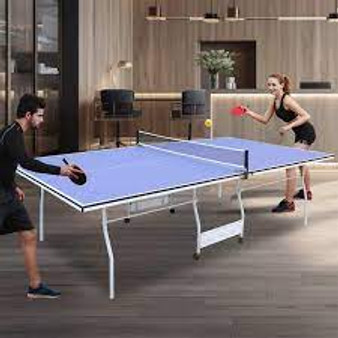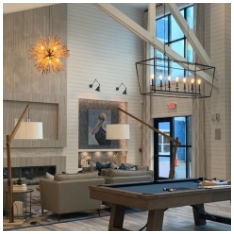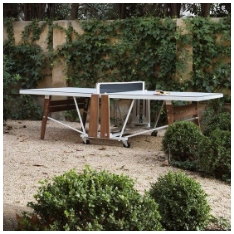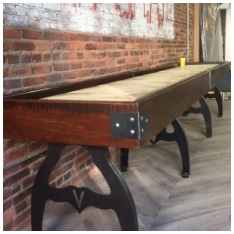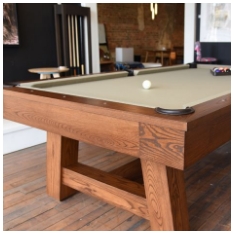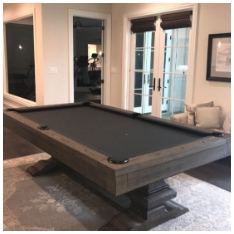Table tennis, often called ping pong, is a game that brings together family, friends, and competitors of all ages. Whether you are a casual player or someone who practices regularly, the type of table you choose plays a significant role in the overall experience. Selecting the right ping pong table is not just about price or appearance it’s about identifying the elements that affect playability, durability, and convenience.
In this detailed guide, we will explore the top features to look for in a quality ping pong table, ensuring you know what matters most before making a purchase.
Understanding the Importance of a Good Ping Pong Table
Before diving into features, it’s worth noting why the table itself is so important. While paddles, balls, and skill levels matter, the surface and build of the table create the foundation for every rally. A poorly designed table may result in inconsistent bounce, wobbling legs, or difficulty storing and moving the unit. On the other hand, a high-quality table will last for years and enhance both practice and competitive play.
Top Features to Look for in a Quality Ping Pong Table
Let’s break down the essential features to consider before buying.
1. Tabletop Thickness and Playing Surface
The thickness of the tabletop is one of the most important factors in determining how a ping pong ball bounces. Most recreational tables have a surface thickness between 12 mm and 25 mm.
- 12–15 mm: Suitable for beginners and casual players.
- 16–19 mm: Mid-range quality, often used for home play.
- 22–25 mm: Professional-grade, offering consistent bounce and performance.
A thicker surface ensures even bounce and reduces warping over time. If you plan on practicing seriously or playing competitive matches, opt for at least 19 mm.
2. Durability of Materials
A quality ping pong table is built to withstand years of play. Look for tables made from medium-density fiberboard (MDF) or high-density fiberboard (HDF) with a strong finish to prevent scratches and moisture damage.
For outdoor tables, durability matters even more. These are usually made from aluminum composite materials or coated with weatherproof layers that resist warping due to humidity or rain.

3. Frame and Leg Stability
The frame and legs provide the foundation for the table. Weak frames can cause wobbling, affecting play. A strong steel frame with sturdy, powder-coated legs ensures the table remains stable during fast-paced rallies.
Check if the table has leveling mechanisms on the legs. Uneven floors are common, and adjustable leg levelers keep the surface flat.
4. Portability and Storage
Not everyone has a permanent game room, which is why foldable and portable ping pong tables are popular.
- Folding design: Allows you to fold one side up for solo practice.
- Locking wheels: Make it easy to roll the table into storage when not in use.
- Compact folding: Ensures the table doesn’t take up too much room.
If space is limited, a table that folds vertically and locks in place is a smart investment.
5. Indoor vs. Outdoor Use
When evaluating the top features to look for in a quality ping pong table, decide where it will be used most often.
- Indoor tables: Provide better bounce and are ideal for controlled environments.
- Outdoor tables: Built with weatherproof surfaces, UV-resistant coatings, and rust-resistant frames.
If you’re planning to move the table between spaces, outdoor-friendly options offer more versatility.
6. Net and Post System
A ping pong table is incomplete without a reliable net. Quality tables often come with a clamp-style net system that holds firmly in place. Some budget models include a simple slip-on net, but these can sag over time.
Look for nets with tension adjustment so you can set it according to your preference. A sturdy, adjustable net ensures fair play and professional-level practice.
- Playback Mode for Solo Practice
Many tables today allow one side to fold up vertically, creating a playback position. This lets you practice against your own returns, which is especially useful if you don’t always have a playing partner.
8. Safety Features
Safety is an overlooked but crucial aspect. High-quality ping pong tables include safety locks that prevent accidental opening or closing when the table is being moved or stored. Rounded corners and padded edges are also useful to prevent injuries during energetic games.
9. Table Size and Compliance
A regulation-sized ping pong table measures 9 feet long, 5 feet wide, and 30 inches high. Some recreational models are smaller, designed for limited spaces.
- Regulation size: Best for serious players.
- Compact or mid-sized tables: Good for apartments or recreational areas.
When buying, consider the space required—not only for the table itself but also for player movement around it.
10. Assembly Requirements
Some tables come pre-assembled, while others require full setup. A good-quality table should not take more than 30–60 minutes to assemble with basic tools. Check if the manufacturer provides a clear guide or pre-attached parts for easier setup.
11. Price and Warranty
While budget is always a consideration, balance cost with quality. Entry-level tables may cost less, but if you plan to play often, investing in a durable model saves money in the long run.
Also, check for warranty coverage. A brand offering at least 2–5 years of warranty demonstrates confidence in its product.
Choosing Between Recreational and Professional Models
When narrowing down the top features to look for in a quality ping pong table, think about who will use it.
- Recreational players: A mid-range table with 16–19 mm thickness, foldable design, and durable frame is sufficient.
- Serious players: A professional-grade table with 22–25 mm thickness, strong legs, and regulation size ensures tournament-level practice.
Maintenance Tips for Longevity
Owning a good ping pong table is only the first step. Proper care extends its life.
- Wipe the surface regularly with a dry or slightly damp cloth.
- Keep indoor tables away from moisture.
- Store outdoor tables under a cover when not in use.
- Check and tighten bolts occasionally to maintain stability.
- Replace nets and posts if they show wear.
Final Thoughts
Investing in the right table transforms the playing experience. By understanding the top features to look for in a quality ping pong table, you’ll make a more informed decision that balances performance, durability, and convenience.
A table with the right thickness, stable frame, portability, and proper net system ensures hours of fun, whether you’re playing with family, practicing solo, or competing with friends. With the right choice, your table tennis experience will be smooth, enjoyable, and long-lasting.
